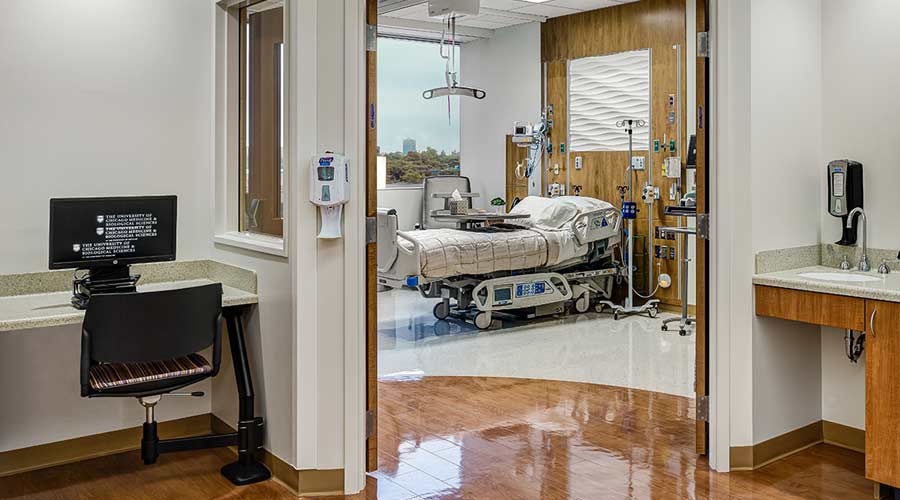While the COVID-19 pandemic certainly has encouraged healthcare leaders to revisit their long-term strategic planning priorities, recent weather-related events have provided an additional impetus for hospitals and other healthcare facilities to prioritize their facility and infrastructure needs. To achieve these goals, facility managers need to focus on critical areas to address and identify potential strategies to help healthcare systems prepare for emergencies.
Benefits of prioritizing
While the prioritization process requires a commitment of time and talent, the benefits are considerable. A well-documented plan executed in an orderly fashion can help hospitals:
- use the built environment to implement the strategic vision
- apply a systemic vision, avoid replication of resources and group services to achieve skill efficiency
- avoid failures from equipment and infrastructures that can interrupt critical operations
- Identify potential mergers/acquisitions that could contribute to reduced costs through sharing of services
- consolidate supply chain and other services to improve productivity
- facilitate the orderly replacement and upgrades of technology to stay current with current best practices.
Include front-line staff
Many healthcare systems make the mistake of only including senior management and C-suite decision-makers in the strategic planning process. They also need to remember to include front-line staff in the process, such as the facilities maintenance team and the environmental services staff. Executives should ask them what they need moving forward, what equipment is at risk of failure, and the potential consequences of a failure.
For example, what is the end-of-life status for critical systems that support the procedural platform? An unexpected failure of a major system could potentially shutter one of the highest revenue-generating areas of the hospital. A failed emergency generator could lead to power loss to the building and lead to evacuation and potential patient injuries.
Failure of an essential mechanical part, such as a bearing in a critical HVAC unit, can shut down an entire department or wing and require high-cost emergency repairs. The input from these off-stage heroes who keep things running every day can provide invaluable decision-making data.
Understanding the cost of failure
Executives should know the risk of failure, as well as the consequences that might result from it. Is equipment obsolete or prone to unexpected sudden failure, and is it repairable? The downside risks are quantifiable. Unfortunately, most decisions regarding budget and equipment do not even consider the possibility of failure because administrators focus on return on investment, rather than building health.
The prioritization process helps identify risks for system failure and analyze budget requirements to mitigate the risk. An orderly process to maintain, repair, or replace infrastructure equipment will prevent catastrophic failures and reduce the need for high-cost emergency repairs. The American Society of Healthcare Engineers has developed a methodology to quantify the risk vs. cost of potential system failures to justify needed expenditures for preventive maintenance or replacement of critical infrastructure systems. For more information, see the ASHE website Store and search for the On-Demand Webinar: Infrastructure Capital Planning.
Target budget and operations to needs
Competition between healthcare providers is expected, and hospitals often compete to provide profitable revenue-generating services with state-of-the-art technology.
But not every service and technology are needed in every facility. Investing in an expensive piece of technology that is not fully used is a waste of money that could have been spent maintaining the building or buying new, state-of-the-art equipment that would serve patients.
Consider centralizing supply chain operations and institute inventory control where possible to reduce high-cost supplies such as medications and expensive sterile supplies such as implantable devices and catheters. This is especially effective for large healthcare systems with multiple facilities if those facilities are operating with decentralized control of purchasing and inventory of expensive supplies.
Consider professional resources
Consider contacting a professional engineer who is familiar with the facility to inspect and evaluate major equipment systems. Here are questions to ask and data to assemble for each major infrastructure system and component:
- Code issues. Does the system and its components comply with current code requirements? Are there life-safety or environmental issues that could be cited by annual inspections by the state fire marshal or by the Joint Commission?
- Useful life expectancy. What is the age of the equipment, and what is its condition? Is the system dependable, or is it prone to malfunctions? What is the frequency of needed repair? What is the useful life expectancy? Is the system at risk of failure in the near future, such as within 18 months?
- What is the risk of a system failure, and what is the estimated cost of emergency repairs or replacement compared to scheduled maintenance or planned replacement? Is there a redundant back-up system?
- What is the operational impact and potential cost if a system or component fails?
Information collected and recommendations made will inform the annual budget process. A well-documented plan of action will prevent unexpected system failures and will save the cost of service interruptions, as well as the high cost of emergency repairs.
Bruna Monzillo, MBA, LEED AP BD+C, EDAC, DGNB consultant, is senior associate, principal, and director of diversity and inclusion with Albert Kahn Associates. She can be reached at bruna.monzillo@akahn.com or 305-903-8633.
Editor’s note: This is the first part of a two-part series. Part two of the series will address strategies for ensuring patient and staff safety.

 UF Health Hospitals Rely on Green Globes to Realize Their Full Potential
UF Health Hospitals Rely on Green Globes to Realize Their Full Potential How Healthcare Facilities Can Be Truly Disaster-Resilient
How Healthcare Facilities Can Be Truly Disaster-Resilient TriasMD Breaks Ground on DISC Surgery Center for San Fernando Valley
TriasMD Breaks Ground on DISC Surgery Center for San Fernando Valley Bigfork Valley Hospital Falls Victim to Data Breach
Bigfork Valley Hospital Falls Victim to Data Breach AI-Driven Facilities: Strategic Planning and Cost Management
AI-Driven Facilities: Strategic Planning and Cost Management